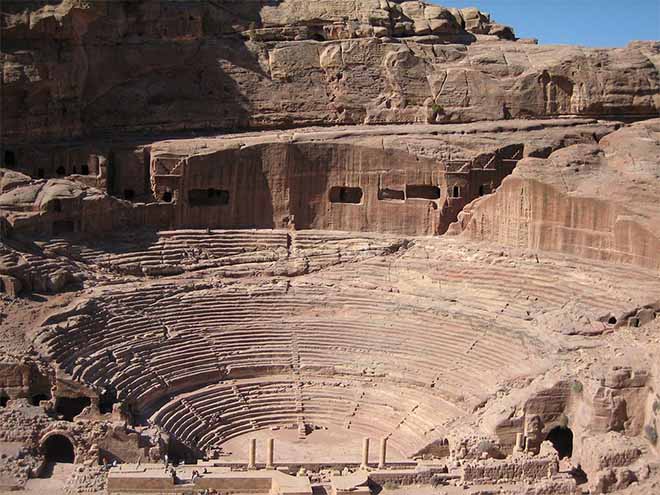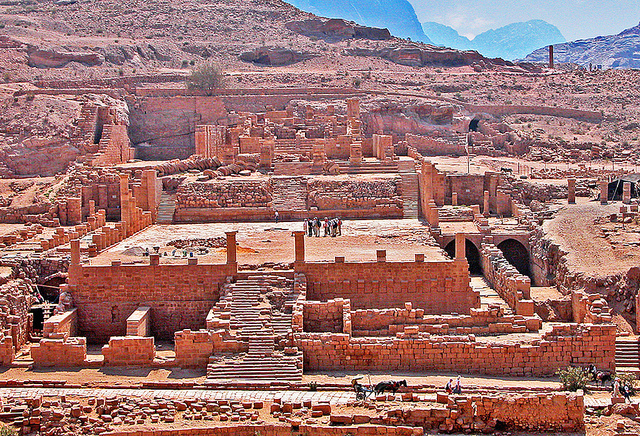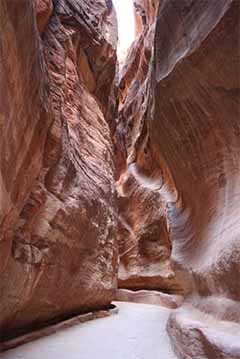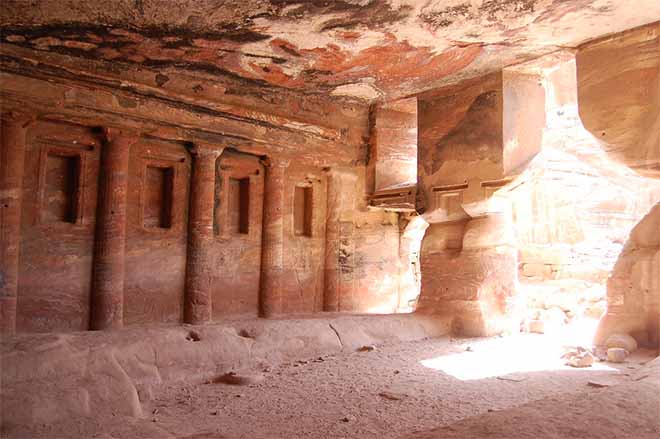Inside The Mysterious And Long Lost Ancient City of Petra, Jordan
The City of Stone

In the heart of the Jordan desert lies one of the strangest and most wonderful of human constructions: the long lost ancient city of Petra, the city of stone. The site of Petra is so fascinating and unique that it has been used as a filming location for the fantasy adventure film Indiana Jones and the Last Crusade as the famous archeology professor goes in search of the Holy Grail. Even today, the city of stone shows all the ingenuity that even men living in ancient times could deploy. Petra is full of mystery and grace, but why was a city built in the rock?
History of Petra city

Built in the 8th century BC by Edomites, the ancient city of Petra was later occupied by the Nabataeans (a nomadic people of Arabia) because of its strategic position. Directly located on the caravans road shuttling between Egypt, the Mediterranean and South Arabia carrying goods and products of all kinds, Petra city becomes a commercial powerhouse whose influence is felt as far as Palestine. At its peak, the lost city of Petra is home to nearly 30,000 inhabitants and is one of the most prestigious cities in the Middle East. It was at this time that the Nabataeans built the most famous monuments of Petra: the Al-Khazneh (the treasury), the Treasure House, the City Center, the Roman Theater (which can accommodate 5000 people) and a large number of tombs.

Due to a commercial decline, the city of stone was gradually abandoned by the Nabataeans before falling into the hands of the Romans in the early second century. Falling into ruins following many earthquakes, the lost city of Petra will serve as a bastion for medieval era crusades before becoming a place of legend. The ancient city of Petra will only be rediscovered at the end of the 19th century by archaeologists on an expedition to the Jordan desert.


Why was Petra built ?
Some say that the ancient city of Petra was first and foremost built for military reasons. Built at the exit of a long narrow gorge of 1,200 meters (a passage called the Siq) dug between two very high walls by Paleozoic flood, the site of Petra is difficult to access and easy to defend. In order to invade the city of stone, an enemy first had to control surrounding mountains. And since the buildings of Petra are built inside cliffs, it was almost impossible for an invader to estimate defense capabilities of the city. Those wanting to seize Petra had no choice but to blindly engage into the Siq in peril of their own lives ; a very risky enterprise.
Inside Petra Jordan

Many legends surround the lost city of Petra and give it a tinge of mysticism. At the time of its rediscovery, while the place was still only accessible to Muslims, some morbid gossip started to spread the rumor that bones of the last crusaders who had dared to speak of Petra were found on the site.
Other legends report that priceless treasures belonging to ancient Egyptian pharaohs like Akhenaten would be hidden in the rubble of the ancient city of Petra. Several sarcophagi have also been found in Petra's treasury (the Al-Khazneh), suggesting that the city of stone possibly served as a place of eternal rest for some egyptian sovereigns.
Moreover, Nabataeans left absolutely no traces that would allow historians and archaeologists to restore their appearances. Human sacrifices would have forced inhabitants to abruptly leave Petra city while the worship of the dead reached its climax.
Petra would also have biblical origins and for all these reasons enjoys a reputation as fascinating as it is grim.









































































































































































































































































































































